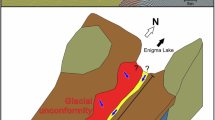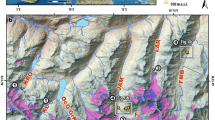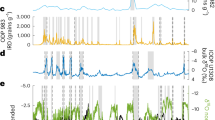Abstract
RECENTLY, Boulton and Worsley1 have interpreted the huge composite morainic suite which occurs in the Wrexham–Bar Hill area of the Shropshire–Cheshire Basin as an end-moraine marking the southern limit of the advance of an ice-sheet in the Weichselian Glaciation. This interpretation is based on a radiocarbon dating of about 28,000 years B.P. obtained from only two molluscan shells found beneath the Upper Boulder Clay in the Sandiway district of Cheshire to the north of the morainic suite. It ignores the fact that the Upper Boulder Clay is cut into and is therefore older than the highest stages of the Lake Lapworth sequence which was formed during the retreat of the Upper Boulder Clay ice-sheet. These lake stages at 330 ft. and 305 ft. have long been correlated with the Main Terrace of the River Severn and its equivalent terrace on its tributary, the River Salwarpe near Droitwich. From this terrace a radiocarbon dating of about 40,000 years B.P. was recorded2 and, because there seems no reason to doubt this correlation, this clearly demonstrates that the Wrexham–Bar Hill morainic suite is considerably older than 40,000 years and cannot be a product of the last or late Weichselian Glaciation.
Similar content being viewed by others
Article PDF
References
Boulton, G. S., and Worsley, P., Nature, 207, 704 (1965).
Shotton, F. W., and Strachan, I., Quart. J. Geol. Soc., 115, 1 (1959).
Poole, E. G., and Whiteman, A. J., Quart. J. Geol. Soc., 117, 91 (1961).
Poole, E. G., and Whiteman, A. J., The Geology of the Nantwich District. Mem. Geol. Surv. (in the press).
Author information
Authors and Affiliations
Rights and permissions
About this article
Cite this article
POOLE, E. Late Weichselian Glaciation in the Cheshire–Shropshire Basin. Nature 211, 507 (1966). https://doi.org/10.1038/211507a0
Issue date:
DOI: https://doi.org/10.1038/211507a0



